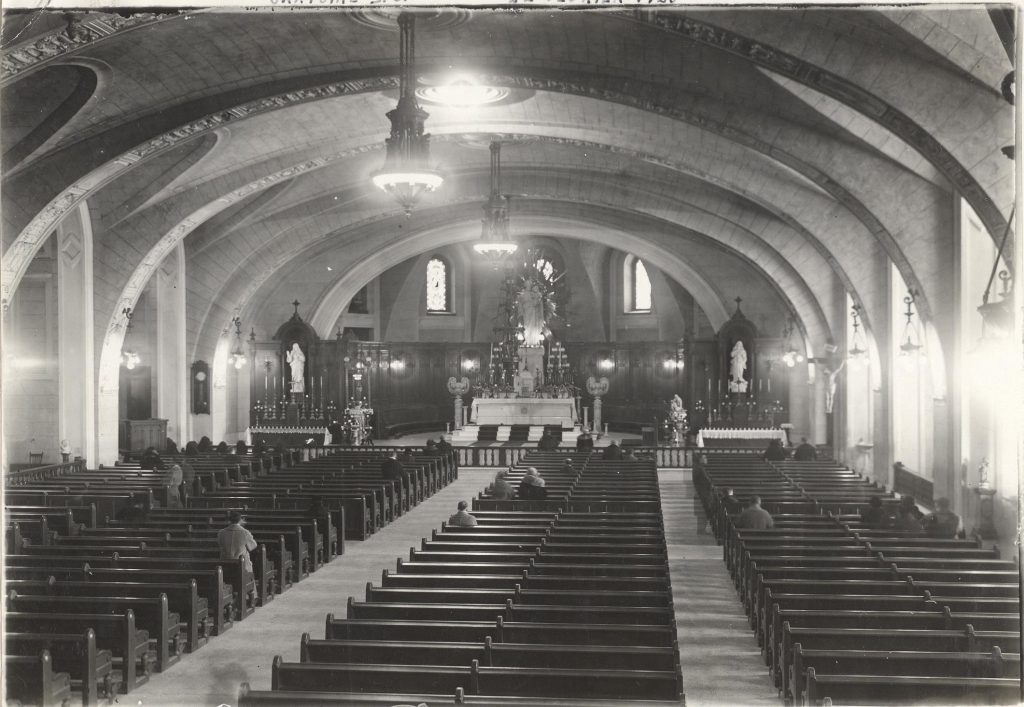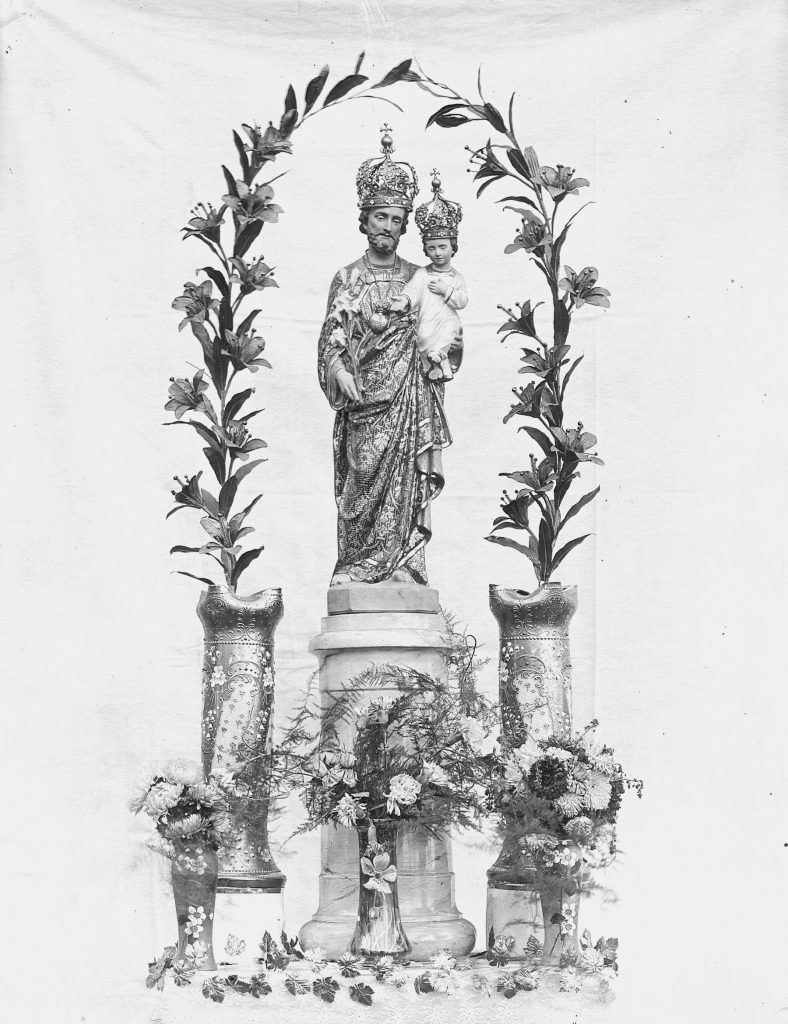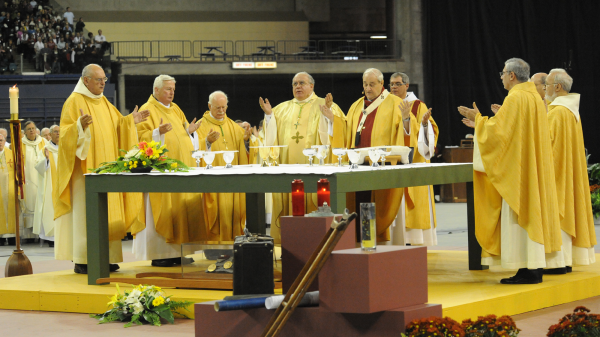And so, Saint Joseph was celebrated for the first time for one day on March 19, 19091. But what a celebration it was! To mark the occasion, the Collège Notre-Dame’s organist, Brother Datien, CSC, started a choir with fellow brothers and friends of the young community. As soon as the High Mass for Saint Joseph in the Collège’s chapel was over, the brother rushed up to join the choir for 10 a.m. Mass. It is said that many zealots who hadn’t been able to set aside their day of work for morning Mass showed up in the evening with “burning torches, whose radiance bathed the humble chapel and the statue of the celestial Patron in a brilliant light.”2 The first Feast of St. Joseph and the first torchlight procession in the same day!
During the following years, the need to organize a more elaborate feast became increasingly obvious. Starting in 1910, celebrations took the form of a triduum3. This word derives from the Latin tres (three) and dies (days)—simply put, it is a special period of public or private devotion that takes place over three days before a great feast. The Oratory’s triduum is held on March 16, 17 and 18.









